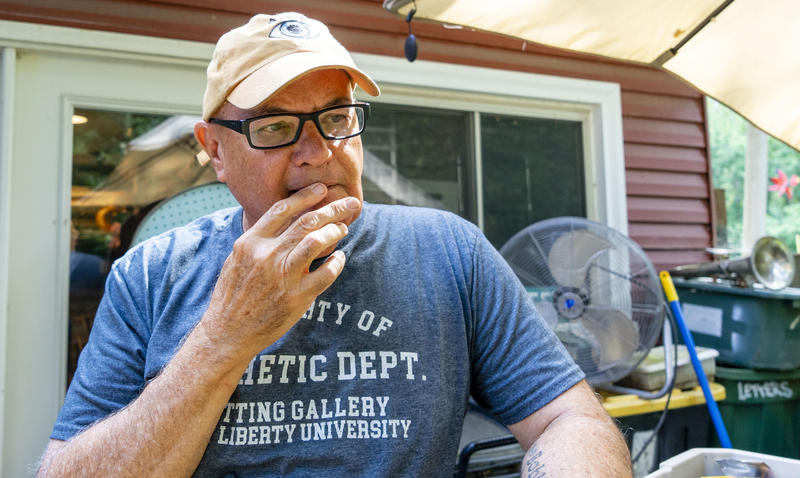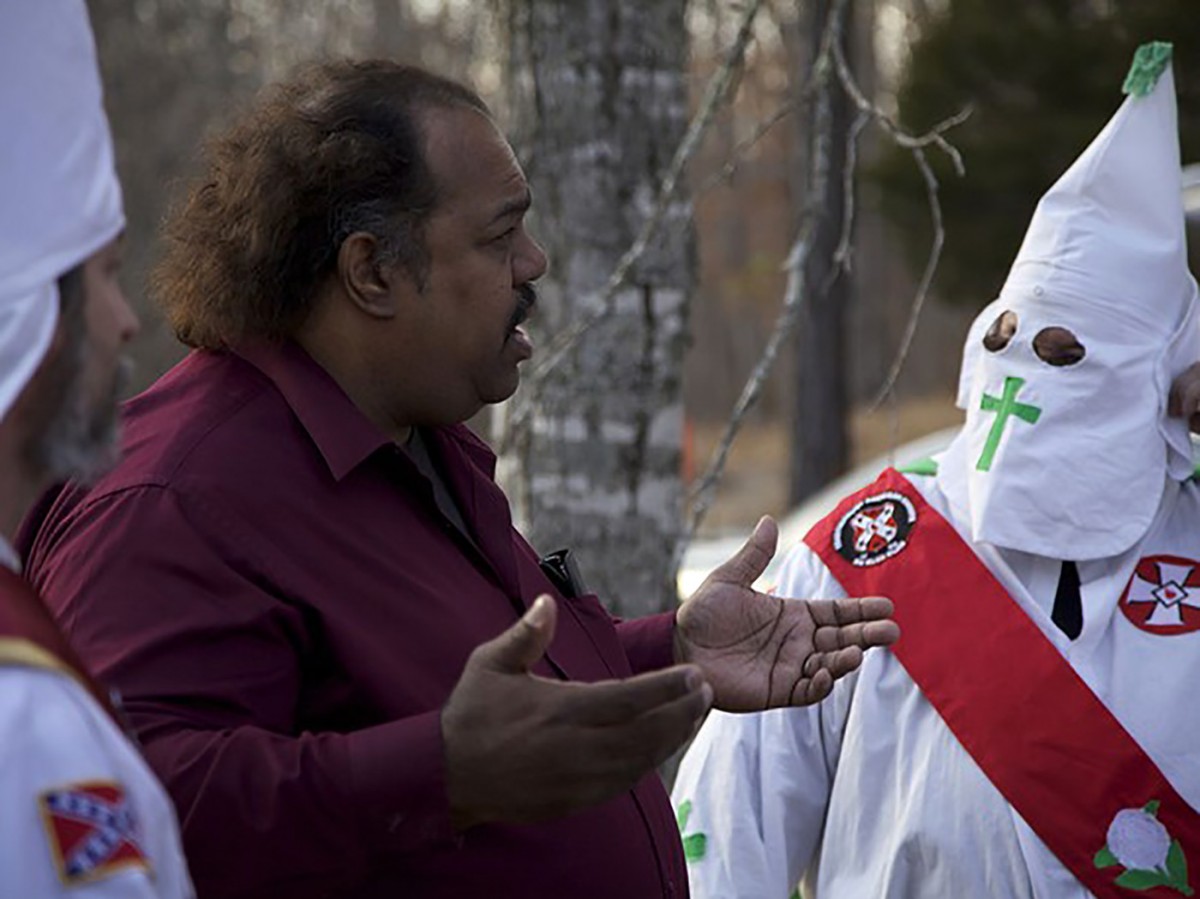A decade after the Civil War, the Grand Army of the Republic started enticing veterans to gather for beans, hardtack and coffee. In southeast Ohio, the beans are still boiling, and so is the debate over which bean dinner is the oldest.
For the past 47 years, Gary and Bob McClaskey have started the first Saturday in August in Vinton, Ohio, by cooking 200 pounds of navy beans with lard and ham in large kettles over a wood fire. The brothers were “passed the paddle” from their father, Pearl Wayne, who took it from his uncle Kerr.
The McClaskeys prepare the main dish for the Vinton bean dinner, an annual reunion and tradition that directly links this Southeast Ohio community to the Civil War.
An Unbroken Link to the Civil War
Local historian John Holcomb, a retired electrician, has for two decades researched the history and lore of bean dinners in Ohio and is currently writing a book on his findings.
The Civil War raged from 1861-1865. The following year, an organization for Union veterans called the Grand Army of the Republic (GAR) was organized to advocate for veterans’ issues such as pensions or the recognition of Memorial Day as a national holiday. At its height, 303 GAR posts were registered in Ohio, but that number plummeted to just eight posts within a few years after the war.
To revive interest in the organization, it was suggested that GAR outposts begin holding “Campfires” to gather the soldiers, build camaraderie, and share stories. The first ones in the nation were held in 1866, and the first in Ohio 10 years later in Toledo, featuring a meal of beans, hardtack (a flatbread), pork and coffee. This combination of ingredients was often carried by Union soldiers as field rations, and together they came to be known as the bean dinner.
Beans were cheap and high in protein, and Holcomb says the Great Northern Bean was the bean of choice for the Union. “If you have a little pork fat and beans, it’s all protein. Guys could get going and still fight.”

Newspaper accounts show various communities across Ohio and other Union states holding their own campfires, also known as encampments, bean bakes and bean dinners. Holcomb has traced the roots of the bean dinner in Ohio to a “campfire” in Toledo in 1876. In Southeast Ohio, he has traced the earliest gathering to neighboring Meigs County, where a “campfire” was held in 1882, but no beans were rumored to have been cooked at this event which is no longer held.
The earliest proclamation Holcomb has found was printed in late summer of 1883 in the Gallipolis Bulletin, a newspaper-of-record from the region, reads:
“…G.A.R. intends holding a Camp Fire…near Vinton, Oct. 13, 1883. All honorably discharged Union soldiers are cordially invited to come and participate. Bill of fare: pork, hard-tack, slap jack, beans.”
Holcomb claims this announcement is the oldest printed documentation of Vinton’s long-running history of bean dinners, unlike word-of-mouth claims from other communities.
It may not be the oldest or the longest-running, but it’s the best proof he has encountered in 20 years of researching the history of GAR bean dinners.
A History of Rivalries and Lore
The Village of Wilkesville, 8 miles north of Vinton, also asserts ownership over the longest-running bean dinner. According to Wilkesville bean dinner organizer Derek Hartman, their event “has been the longest consecutive bean dinner (152 years this year) in the entire state.” But he went on to say, “I have no solid evidence that is true…”

Holcomb contends that Wilkesville’s history is a half-truth. In 1946, the Wilkesville Legion Hall burned, and with it did the records of their bean dinner. Instead of stating the year their bean dinner began, Holcomb says they simply said it was 88 years old. “Well, that means it started in 1858, even before the Civil War started! And the next year, they said the same thing! Finally, they got it straightened out and claimed it was 1870.”
But Holcomb claims that newspapers from 1870 make no mention of a bean dinner in Wilkesville. “If you make an outstanding claim, you need to have outstanding proof.” He says that as Wilkesville changed their history, a domino effect went off among other Ohio communities who still held bean dinners.
Organizers of the bean dinner in New Castle, located about 100 miles north of Vinton, knew their event was older than Wilkesville’s, “So they re-wrote their history. And then Vinton re-wrote their history in 1957 and said it started in 1868!” None of these assertions are documented, or rather, if they are documented, proof has yet to surface.
The Village of Rio Grande, located 8 miles south of Vinton, declares the second oldest bean dinner is in its community, but Holcomb asserts these claims are just that. In a newspaper clipping from the Coshocton Age in 1884 shows New Castle held a “camp-fire on the 4th day of July, 1884, and a festival at night, and we invite all to attend. There will be good speakers and several bands and [sic] cannon in attendance, and a good time is expected generally.”
This clipping from New Castle, Holcomb says, provides documented evidence that the second-longest running bean dinner came from this community.
While Holcomb cannot prove that bean dinners in other communities did not happen before Vinton’s printed newspaper proclamation in 1883, without documentation, “none of those legends have outstanding proof.” And from the October 1883 publication in the Gallipolis Bulletin, Holcomb believes he has located the proof he needs to claim Vinton’s bean dinner as the oldest documented event.

A Tradition Amidst a Pandemic and Beyond
“We’re hell bent to not buster tradition, because I want this to be continuous…it’s a reunion as much as tradition,” says Bob McCarley, a retired coal miner and airplane mechanic, who is the commander for the American Legion Post #161, which now organizes the bean dinner as an annual fundraiser.
This year, volunteers wore protective equipment like masks and face shields. Handwashing and sanitizing stations were found at either end of the covered pavilion, and for the first time, a drive-through option was offered for people who were not comfortable joining a gathering but wanted to support the Legion – and still participate in the tradition.
Tammi Crowell and her sister Penny both volunteered to serve food at the drive-thru station. They reflected on how this year’s event was different. The bean dinner did not start with the sound of the band at the end of the parade, there were no games, and only one local politician was milling around and drumming up support. “Covid has slowed the world down to a pace it used to be,” said Tammi. “I call it F.F.T. – Forced Family Time,” replied Penny.

Gary McClaskey, one of the cooks, worries that the next generation of veterans isn’t joining organizations like the American Legion. “There may be no place to pass the paddle,” he says, referring to the stick used to stir up the main dish.
McCarley, the post commander, says “The ball is kind of in our court” when it comes to keeping the tradition alive. He hopes that younger generations of veterans can step in and step up, but mirroring national trends regarding enrollment in the American Legion, younger veterans aren’t joining the Vinton Post. “I get it. They’re starting a family, they’re working. There was a period I was working two jobs. I understand.”
Still, to this day, people who grew up in Vinton and have moved away know to mark the first Saturday of every August on their calendars for a homecoming trip to Southeast Ohio. A deep sense of community pride stems from keeping connected to this unbroken link to the Civil War. But maybe more important to the community is how the Vinton bean dinner continues to keep strong the ties that bind this Southeast Ohio community together – even during a global pandemic.
This article was originally published by the Daily Yonder.



